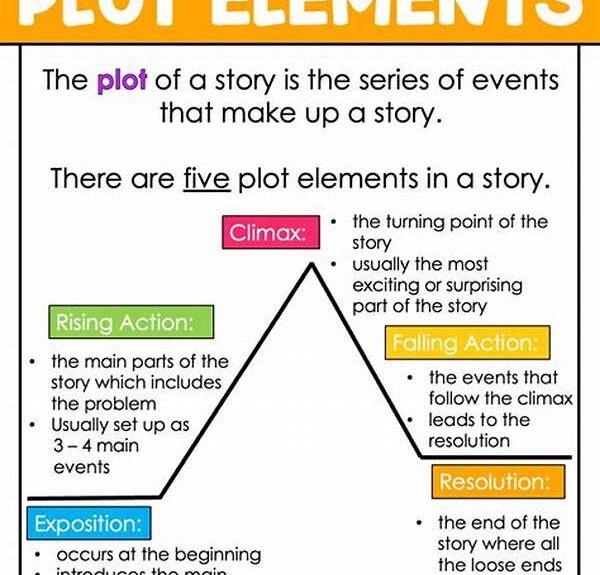The world of art prints offers a vibrant marketplace with many potential buyers. Understanding the target audience for art print sales is crucial in tapping into this thriving market. By identifying and catering to the specific preferences of different audience segments, artists and sellers can enhance their marketing strategies and achieve greater success.
Read Now : Strategies To Secure Art Commissions
Understanding Your Target Audience
To effectively engage the target audience for art print sales, it begins with comprehension. Who are they, and what do they desire in an art piece? Typically, art print buyers are varied, ranging from seasoned art collectors to individuals looking to spruce up their living spaces. Each demographic has unique motivations. For some, it’s the allure of investing in art; for others, it simply brings beauty into their daily surroundings. Tailoring marketing strategies to cater to these distinct needs can elevate the likelihood of successful sales.
Moreover, the modern art buyer is also tech-savvy, often scouring online platforms and social media for inspiration and purchases. Therefore, establishing a strong online presence is paramount. Websites, social media profiles, and virtual galleries serve as extensions of an artist’s brand and help bridge the gap between the product and its target audience. Engaging content, high-quality visuals, and user-friendly navigation are essential components in capturing and maintaining the interest of art print buyers. Understanding these nuances offers a significant advantage in the competitive art market.
Key Demographics of Art Print Buyers
1. Young Professionals: This demographic values aesthetics and seeks art prints that reflect their lifestyle and personal taste. Engaging them with modern designs and easy purchase options is essential.
2. Homeowners: Individuals or families looking for decor ideas constitute a significant target audience for art print sales. They often seek artworks that complement their interior design.
3. Art Enthusiasts: These are knowledgeable individuals who understand art intricacies. Engaging them requires a focus on uniqueness, artist reputation, and the artwork’s story.
4. Gift Shoppers: Art prints serve as personalized gifts, attracting buyers who seek meaningful and thoughtful pieces for loved ones. Packaging and presentation play a crucial role here.
5. Business Owners: Seeking to enhance their working environments, business owners invest in art prints that resonate with their brand ethos and values.
Crafting a Strategy to Reach Your Audience
Identifying the ideal target audience for art print sales is only the beginning; the next step lies in crafting strategies to engage them effectively. One powerful method is leveraging digital marketing tools. Social media marketing, search engine optimization, and personalized email campaigns can significantly expand an artist’s reach. Creating content that resonates with the preferences of identified demographics, such as behind-the-scenes videos, artist interviews, or limited-time offers, can capture potential buyers’ attention and encourage engagement.
Collaborating with influencers or partnering with online marketplaces can also open up new avenues for reaching the desired target audience for art print sales. Influencers, with their dedicated follower base, can showcase an artist’s work to a wider public, presenting a trusted word-of-mouth recommendation. Meanwhile, online marketplaces provide infrastructure and visibility required to drive more sales. It’s crucial to consistently evaluate and adapt these strategies to remain aligned with the evolving tastes and habits of art print buyers.
Importance of Market Research
To effectively identify the target audience for art print sales, market research is indispensable. Understanding current trends, consumer behavior, price points, and preferences can provide invaluable insights. Surveys, focus groups, and online feedback can identify what buyers are looking for. This data allows sellers to adjust their collections, pricing, and marketing techniques to align better with consumer expectations. Additionally, analyzing competitors’ strategies provides another layer of understanding, highlighting both opportunities and potential pitfalls within the market landscape.
Read Now : Authenticity Standards For Digital Creations
Ultimately, thorough market research enables artists and sellers to offer more appealing products, thereby maximizing potential sales. Through a solid understanding of the target audience, businesses within the art print industry can refine their offerings, ensuring they meet or surpass the needs of art buyers, resulting in sustained growth and success.
Reaching Out to Art Print Enthusiasts
Engaging the target audience for art print sales involves several strategies. One essential approach is creating a narrative around the artwork. Storytelling connects emotionally with potential buyers, providing them with deeper insights into the art piece’s inspiration and significance. Adding personal anecdotes or historical context can elevate an artwork from mere decoration to a piece with a story, capturing a buyer’s imagination and desire.
Equally vital is the presentation and accessibility of the art prints. High-quality images and detailed descriptions allow customers to visualize how the artwork might appear in their space. Providing dimensions, material details, and framing suggestions can aid in decision-making, enhancing the overall buying experience. Furthermore, offering various price points, including limited edition prints, appeals to diverse financial capabilities, broadening the audience base.
Cultivating Long-Term Relationships
Building relationships with the target audience for art print sales goes beyond initial transactions; it’s about cultivating long-term connections. Follow-up communications, whether through newsletters or personalized messages, help maintain engagement with past customers. Offering loyalty programs, early access to new collections, or exclusive discounts can further strengthen these relationships, encouraging repeat business.
Furthermore, encouraging feedback and listening to customer preferences fosters a sense of community and trust. As artists adapt their work and services based on this feedback, they demonstrate responsiveness and dedication to their audience, creating loyal collectors who are more likely to continue supporting their craft over time. This mutual exchange of value is the cornerstone of sustained success in art print sales.
Summary of Effective Strategies
In summary, effectively identifying and engaging the target audience for art print sales is a multifaceted journey. It requires understanding the distinct demographics within the market, tapping into their desires, and crafting genuine connections with them. Digital strategies such as social media outreach, personalized marketing campaigns, and collaborations with influencers play a pivotal role in reaching wider audiences.
Moreover, continuous market research and adaptation to consumer feedback ensure that sellers remain agile in a competitive landscape. By focusing on storytelling and creating an inclusive buying experience, artists can elevate the perceived value of their art prints, ultimately securing success. These combined strategies foster not only increased sales but also enduring relationships with art enthusiasts, sustaining the art market over time.



